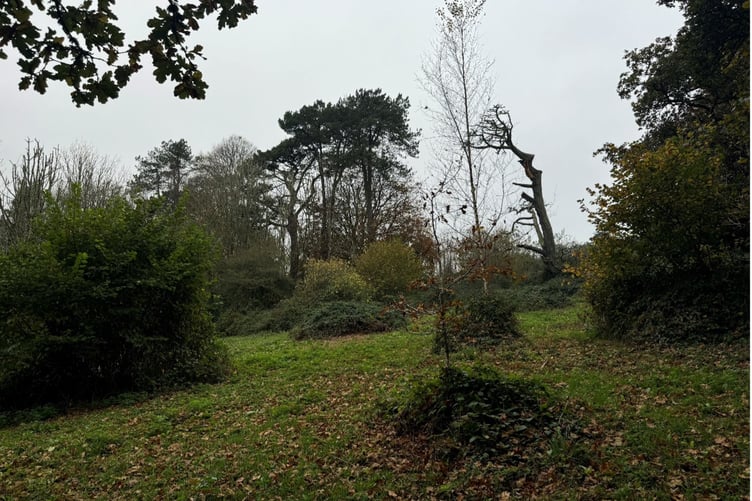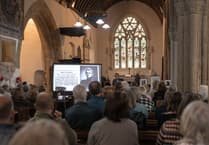EACH week, hundreds of planning applications come before Cornwall Council’s planning department, seeking to win approval for various plans right across the Duchy.
These plans can comprise of a number of different reasonings– ranging from permission to replace windows or listed building consent ranging up to large house building developments or changing of use of a building, for instance, from an office to a café, or flats.
Within this large and often complex system, there are a number of formats from which planning advice and approval can be sought.
These range from full applications where all the details which comprise a proposed development or work to a building are submitted, to outline applications, where further details are yet to be confirmed, for example, an outline application with reserved matters for appearance may not confirm the final proposed development but rather seek permission in principle.
An example of this is one for an outline permission for 20 dwellings on land with reserved matters for appearance and scale; the reserved matters would require further permission later for their inclusion.
Other types of applications include pre-application advice requests, where would-be developers submit often outline proposals to a local authority to ascertain whether it is likely to gain support or not prior to submitting a planning application.
The vast majority of applications are decided by planning officers employed by a local authority under ‘delegated powers’, meaning they do so on behalf of their employer, however, some applications are ‘called in’ by local councillors to be discussed at an area’s strategic planning committee meeting, meaning the final decision rests with a committee of councillors.
Nature facility could be approved
PLANS for a ‘healing by nature’ wellbeing hub in Liskeard could become a reality after a favourable response to a pre-application planning advice enquiry.
Cornwall Council’s planners said that the benefits the facility would bring would be likely to gain officer support if it were to progress to a full planning application.
Cornwall Partnership NHS Foundation Trust has submitted an application for its property on land to the rear of Trevillis House, Lodge Hill, Liskeard.
The plans were described as thus: “The site forms part of Trevillis House, located toward the southern edge of Liskeard, which is owned and operated by the Cornwall Partnership NHS Foundation Trust.
“The property was built in the early 1900s and is not listed. There are wider grounds associated with the house located to the south of the property which is the subject of this enquiry. The land slopes down to the south and there are number of larger trees within the site.”
It would be a trauma informed, relational green health hub that seeks to provide a community centred prevention initiative to address health inequalities.
The proposal would incorporate elements such as allotments, yurts, roundhouse, amphitheatre, wet relaxation area and a sensory garden within the grounds of Trevillis House.
Within the advice, the applicant was advised: “The proposal seems to be reasonably well separated from neighbouring properties to avoid any significant impacts, however I would ask that any future application sets out how the Hub will be managed to ensure that potential wider impacts to neighbouring properties would be managed, especially if any features are being proposed to be utilised into the later evening hours where noise impacts could be more problematic.”
The planning officer concluded: “Officers would be supportive of the development proposed in principle due to the clear and obvious public benefits of the scheme.
“However, before designs are progressed further, I would suggest work is undertaken to secure the Preliminary Ecological Appraisal, Arboricultural Impact Assessment, and Biodiversity Net Gain Report and Metric as these reports may result in some changes to the initial design.
“In respect of trees, you will need to mindful of root protection areas and any canopy impacts to the more significant trees, particularly around the edges of the site. Its likely the compost toilet may need to be moved away from the veteran oak trees, and potential other features may also require resiting from other larger trees.
“An Arborist will be able to advise you further on this matter. Similarly, in respect of ecology, an Ecologist will be able to advise you on mitigation measures, such as minimising light spill or other impacts to hedgerows. The measures would need to be set out within a future planning application. Provided impacts to trees and ecology can be minimised, any future application has a strong chance of support.”
Concerns over access road
PROPOSALS for the access roads to a large housing development near Bodmin has been met with concern from Bodmin Town Council and highways officers.
Devonshire Homes applied to the authority for planning permission for the access roads to their proposed 678 home development at Callywith.
However, there are fears that their proposed roads on the site would both prevent any future Northern relief road to be built in addition to providing inadequate access.
The issue was discussed at a recent meeting of Bodmin Town Council’s planning committee.
Cllr Andy Coppin, the deputy chair of Bodmin Town Council’s planning committee said: “The development will stop the northern relief road and we as a council need to strongly object. The access as it is, is not suitable for future purposes and we have to try to get what we need as a possibility because there are so many things that have happened in Bodmin that have happened and it is such poor planning with no forethought.”
Cllr Jeremy Cooper said: “As far as I can see, this plan conflicts with the national policy framework concerning safe access and significant development on locations which are and can be made sustainable.
“It is without a shadow of a doubt that unless there is another school built in the Callywith area, the present location of the schools at St Mary’s, St Petroc's and Berrycoombe, for example are on the other side of Bodmin and within NPPF section 110 it would conflict as it would not be sustainable transport as-is.”
Bodmin Town Council resolved to object to the application.
The Highways Development Management office at Cornwall Council also aired significant concerns.
They said: “Advice was initially provided via PA24/01109/PREAPP, with this application looking to secure means of access for the residential and commercial elements. There are elements of that advice which have not been incorporated into the full application, and on receipt of the modelling outputs further issues have arisen that require addressing, such that the application is currently deficient in a number of areas and not supported on highway grounds.
“I do not consider that the majority of residents would favour a convoluted dog leg route via the existing infrastructure to access the town centre, which would be a significant increase in both distance and journey time. In addition, the majority of the primary schools in Bodmin are to the south and south-west of the site, such that the desire line to the south is the favourable route.”
Keep up to date with the latest planning applications and other statutory notices (such as alcohol licensing and probates) that affect where you live by visiting our online Public Notice Portal – be the first to know by visiting www.publicnoticeportal.uk/cornish-times-series.





Comments
This article has no comments yet. Be the first to leave a comment.